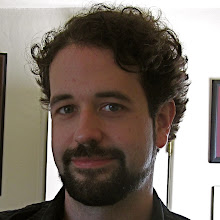The UbD system provides a template for a better alternative, in which both the teacher and the students understand why the students are learning what they're learning and how those specific activities are going to tie in to the bigger picture.
"You probably know the saying, 'If you don't know exactly where you are headed, then any road will get you there.' Alas, the point is a serious one in education. We are quick to say what things we like to teach, what activities we will do, and what kinds of resources we will use; but without clarifying the desired results of our teaching, how will we ever know whether our designs are appropriate or arbitrary? How will we distinguish merely interesting learning from effective learning? More pointedly, how will we ever meet content standards or arrive at hard-won student understandings unless we think through what those goals imply for the learner's activities and achievements?" (p.14)
I'm already thinking about my goals for the first unit of my biology course. There are a lot of different ways you can go about teaching biology. The most common seems to be starting with the basic processes of the cell and then working up through tissues, organs, organ systems, and different types of organisms; then focusing on development and evolution; then, if there's time, getting into ecology and environmental protection at the end. The problem with this, I think, is that students don't see the "big picture" until the end of the year, when they're already thinking about summer break more than their classes. Keeping in mind what Howard Gardner said about training people to think like scientists, geometers, historians, etc. -- as well as the UbD focus on "big ideas" -- I think this approach is backwards, at least for the high school level. If I want students to understand how the ecosystem functions -- and how the things humans do can disrupt that functionality -- then it's essential to start with the big picture.
The first unit, I think, should focus on ecology: What makes something alive? What roles do living organisms play in their environment (producers, primary consumers, secondary consumers, etc.)? How do these different organisms interact with each other, and how do nutrients and energy flow through the system? These are questions that students can tackle without understanding the nitty-gritty details of how organisms are put together, and having this "big picture" in place will make things easier when I get to the other big topics that I want to cover, homeostasis (how do organisms maintain themselves within their specific niche?) and evolution (how do species change in response to changes in their environment and its available niches?). It may well be that, as Theodosius Dobzhansky said, nothing in biology makes sense except in light of evolution; however, in terms of putting information about biological systems into a "big picture" narrative that the students can grasp, it is equally true that nothing makes sense except in light of ecology. I look forward to continuing to develop my plans for this first unit as I delve further into the details of the UbD process.
